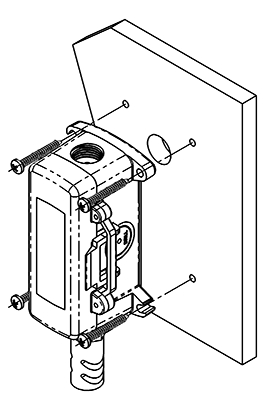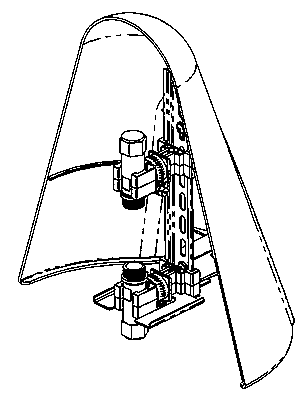
The physical placement of BAPI outdoor temperature and humidity sensors depends on its application.
If the outside air is being used for economizing, the sensor should be placed close to the economizer damper without being in the air draft. If the economizer damper is on the roof, the sensor should be on the roof. If the economizer damper comes through the building wall, the sensor should be on the wall. If you want meteorological data, showing building occupants the outdoor weather conditions, mount the sensor on the side of building.
Place the sensor in a location where it does not receive direct sunlight because this can cause solar heat gain and affect readings. BAPI’s tests show that readings can be affected by as much as 30% from solar heat gain. In far northern or southern latitudes, be aware that at sunrise or sunset the sun can illuminate all sides of a building.
The BAPI Weather Shade effectively reduces the solar heat gain, improving the accuracy of outdoor sensors. The shape of the cone and spacing from the wall creates a chimney which draws radiant heat from solar gain away from the sensor. The “domed” top also prevents bird nesting while the smooth surface minimizes hosting of insects. On humidity sensors, the Weather Shade also protects the probe filter from precipitation and grit, extending the life of the filter.
When mounting the sensor, drill the mounting holes as shown in the sensor’s installation instructions. The best practice is to mount the unit with the sensor probes pointing down at a minimum of four feet above the ground or roof. Four feet isolates the sensor from any water puddles that would cause erroneous readings.

Water is the enemy of building materials and electrical connections. Carefully seal everything to get a good watertight seal. Be sure to seal the box plugs, conduit and conduit fittings.
Attach the sensor with the mounting hardware provided. DO NOT drill through the back of weatherproof boxes. Holes destroy the integrity of the box and may void the warranty.
Route the wires into the box and terminate with sealant filled connectors. BAPI’s sealant filled connectors prevent water from attacking the connection, thereby preventing costly callbacks. The best practice is to seal the wiring hole after the wires are installed.
If you need any help mounting BAPI products or have any additional questions, please call your BAPI representative.
References
http://weather.gov/om/coop/standards.htm
The State Climatologist (1985) Publication of the American Association of State Climatologists: Heights and Exposure Standards for Sensors on Automated Weather Stations, v. 9, No. 4 October, 1985.
EPA (1987). On-Site Meteorological Program Guidance for Regulatory Modeling Applications, EPA-450/4-87-013. Office of Air Quality Planning and Standards, Research Triangle Parks, North Carolina 27711.
WMO (1983). Guide to Meteorological Instruments and Methods of Observation. World Meteorological Organization No. 8, 5th edition, Geneva Switzerland.



